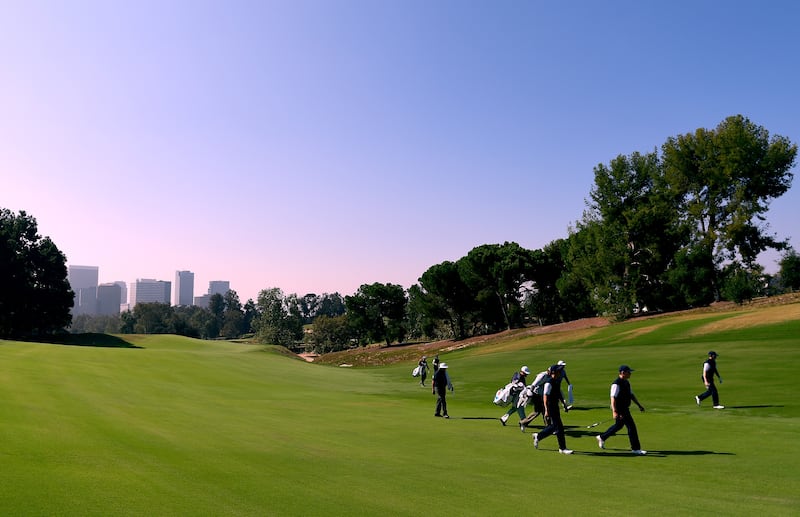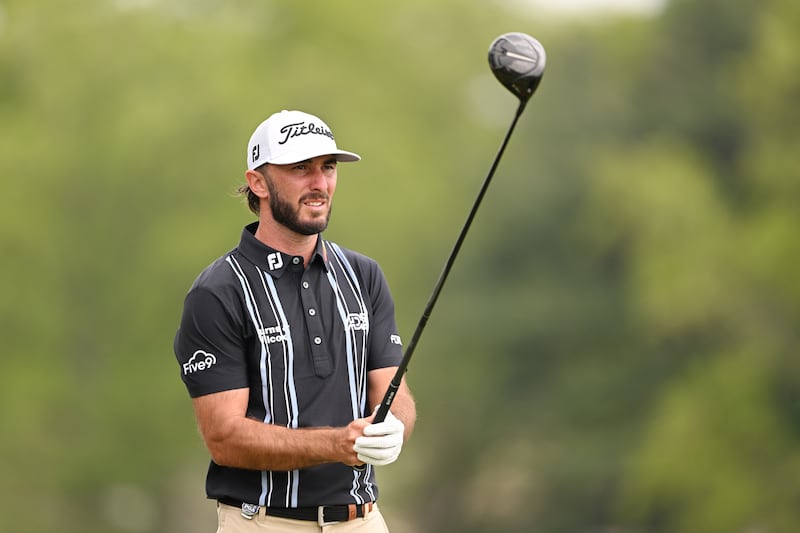If not quite a step into the unknown, the 123rd US Open at Los Angeles Country Club nevertheless provides a move to a new venue on old terrain for those seeking to win the famed trophy. It will be the first time for the course in Beverly Hills to play host to a Major championship and only a handful of players have experienced any competitive outing on the rolling, treelined course, most notably world number one Scottie Scheffler and Collin Morikawa, who were members of the winning USA team in the 2017 Walker Cup.
What we do know, however, is that the United States Golf Association’s (USGA) philosophy of making the US Open the toughest examination in golf will play out.
This is the first new site for the championship since Erin Hills played host in 2017. What is different this time is that Los Angeles Country Club has history, the club moving to this location in 1911 when a rudimentary layout was in play until W Herbert Fowler, the noted English course architect, remodelled it in 1921 and, then seven years later, George Thomas Jnr undertook further reshaping.
For it to be awarded this latest edition of the US Open, the USGA brought in course architect Gil Hanse – working with his design partner Jim Wagner and golf historian Geoff Shackelford – in 2006 to make it fit for the modern game while also maintaining the original design concepts of Fowler and Thomas. Hanse has been the go-to man of recent decades for the USGA, having also worked on recent US Open sites Merion, Oakmont, Winged Foot and Brookline.
READ MORE
One of the main aspects of Hanse and his team’s restoration was in reclaiming areas of putting greens that had been lost over time and the green complexes are varied in size and in their eccentric shaping.
The par-70 North Course is unusual in its configuration, presenting a scorecard that features five par threes and three par fives. Hanse, for one, was smitten with what was presented to him: “I can say without hesitation that we learned more on this project, about ourselves, about relationships with clubs, about George Thomas and golf architecture, than on any other project we’ve ever been associated with.
“The characteristic that is most prominent in my mind is the barranca [river gorge] that runs predominantly through the front nine and provides a significant amount of strategy. Thomas incorporated it in many ways, it fronts some of the greens and parallels some of the holes, while on other holes you have diagonal carries over it. He utilised it dramatically.”
Shane Lowry was one of a small number of players to make time for a reconnaissance visit to the course when in LA earlier this year for the Genesis Invitational at nearby Riviera. A missed cut at the Phoenix Open opened up the opportunity. And, although conditions were quite different, wet and long compared to the firmness of next week, Lowry felt it was a worthwhile trip.

“The greens are bent, not poa, which is good. They are nice to putt on but very slopey, back-to-front on a lot of the greens. If you’re over [the back], you’re in trouble ... there’s a lot of blind shots. You’re going to need to hit it straight because the fairways are wide but they camber off and there’s Bermuda rough where the ball sits down.
“I don’t know if it suits anybody other than you will need your A-Game. You get to a US Open you need to drive it well, your irons need to be precise, short game has to be tidy. You need all of that and really good thinking between your ears,” said Lowry.
In contrast, Rory McIlroy – another of the five Irish players in the field next week, along with Lowry, Pádraig Harrington, Séamus Power and amateur Matt McClean – took a pass believing the spring conditions were too contrasting to those of the summer to be of any benefit.
As McIlroy explained at this week’s Canadian Open: “I’ve watched some videos on YouTube. I know the look of the course and the topography a little bit and what to expect. But you don’t get a real grasp of it until you’re actually out there and your feet are on the ground.”
McIlroy’s plan is to get his first taste on Monday. What he and everyone else can expect is a course that will have their undivided attention from start to finish.
Hanse is of the opinion that the green complexes are among the best he has seen anywhere. “On average, they’re fairly significant in size and they’ve also got some eccentric shapes. As a whole, they’re predicated more on slope than on undulation. They’ve got wonderful tilts and flows to them, as opposed to lot of humps and bumps.”
An example of how player strategy comes into play can be found on the sixth and seventh holes which differ in length by only 46 yards. The sixth is a par four of 330 yards which is drivable if players decide to attempt to cut off the dogleg to find the small plateau green, while the seventh is a par three of 284 yards.
“The sixth hole fits so well into George Thomas’s concept of half-par holes and courses within a course,” said Hanse. “Players are going to step up on that tee and fully expect that they are going to make a birdie. Then you move on to the seventh, only 40 yards shorter and playing as a par three that is really a par three and a half, where you just want to hit the middle of the green and get out with a par.
“It’s almost as though you want six shots between the two holes but if you walk off number six with a four, then do you find yourself pressing on seven? There’s a lot of dominoes that can fall in the way these holes interrelate.”
Also, in keeping with the design philosophy of Thomas, there are very few fairway bunkers, with Hanse believing that rolling landscape and cambering of the fairways provide sufficient challenges.
“I think this is one of the masterpieces of golf course architecture, not only in the United States but in the entire world,” said Hanse, adding: “Seeing the best players on stages like this is an amazing opportunity for people who love golf architecture and love the possibilities, as opposed to the game just being a power game. I believe the course is going to produce a winner who is very cerebral in the way they approach it and I think that will be very fitting for this championship.”

Five to watch
Max Homa
World ranking: 7
Best US Open finish: Tied-47th (2022)
The Californian has a rather miserable record in his national championship – three missed cuts in four appearances – but he has developed into a top-class player and the cerebral nature of the challenge at Los Angeles Country Club should play to his strengths. He also has the distinction of shooting a course record nine-under-par 61 on the North Course when winning the Pac 12 university region championship back in his college days, so that should stand for something.
Odds: 25-1
Matt Fitzpatrick
World ranking: 8
Best US Open finish: 1st (2022)
As he demonstrated in winning at Brookline last year, Fitzpatrick – and his calculating mind, after all this is someone who has kept all of his yardage data going back to his teenage days – has the mental and physical attributes for the type of set-up that the USGA poses at a US Open. He missed the cut at the US PGA but has enough recent form (winner of the Heritage, a top-10 in the Memorial) to suggest he will make a strong bid for back-to-back titles.
Odds: 28-1
Brooks Koepka
World ranking: 13
Best US Open finish: 1st (2017 and 2018)
Finally fit and injury-free, Koepka – who, it must be said, has benefited more than anyone from moving to LIV with its reduced playing schedule – is once again like a man on a mission when it comes to the Majors. Outduelled by Jon Rahm at the Masters, Koepka was a dominant winner of the US PGA at Oak Hill in claiming a fifth career Major championship.
Odds: 9-1
Rickie Fowler
World ranking: 44th
Best US Open finish: 2nd (2014)
Quite the improvement in the past 12 months from Fowler, who was ranked 152nd in the world this time last year. Fowler only barely retained his PGA Tour card (finishing 125th on the FedEx Cup standings) and made changes in his team, switching caddies to Ricky Romano and going back to his old swing coach Butch Harmon. The tough love decisions have worked wonders for Fowler and, playing in a US Open for the first time since 2020, the rejuvenated American can finally challenge for that elusive breakthrough Major win.
Odds: 66-1
Viktor Hovland
World ranking: 5th
Best US Open finish: 13th (2020)
The Norwegian is in terrific form at present, following up his runners-up finish to Koepka at the US PGA with his fourth PGA Tour win in the Memorial where he got that winner’s handshake from tournament host Jack Nicklaus. There has been a notable improvement in Hovland’s scrambling and short game this season and his temperament indicates a player on the cusp of making a Major breakthrough.
Odds: 18-1















